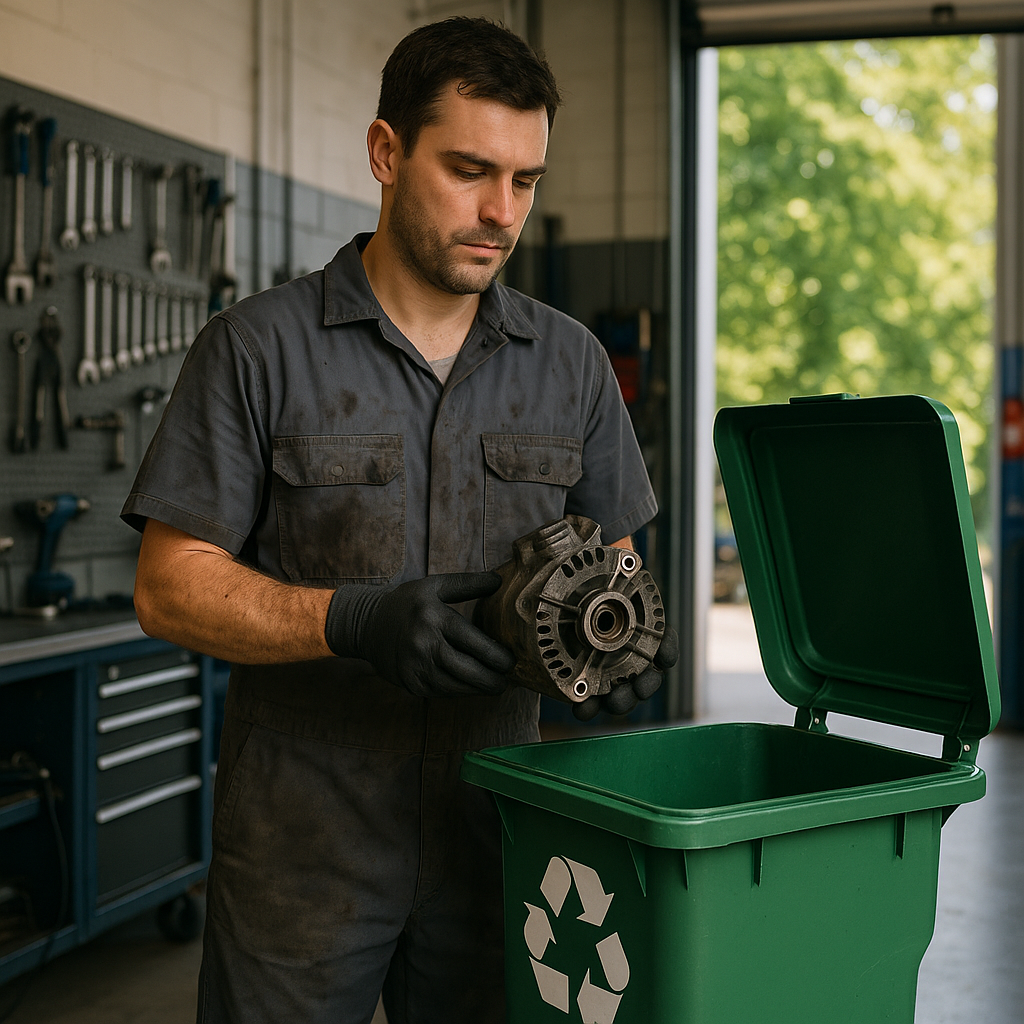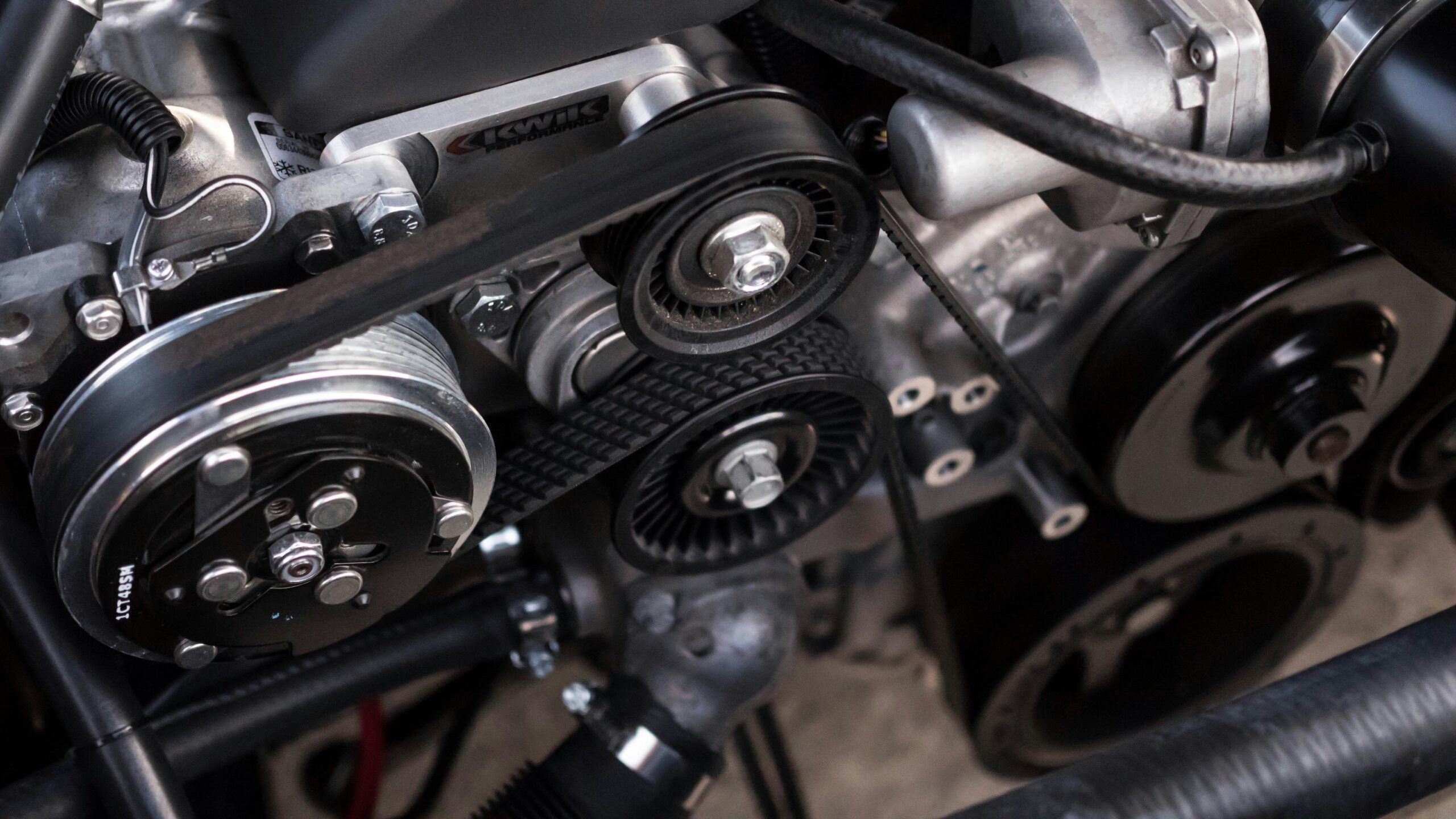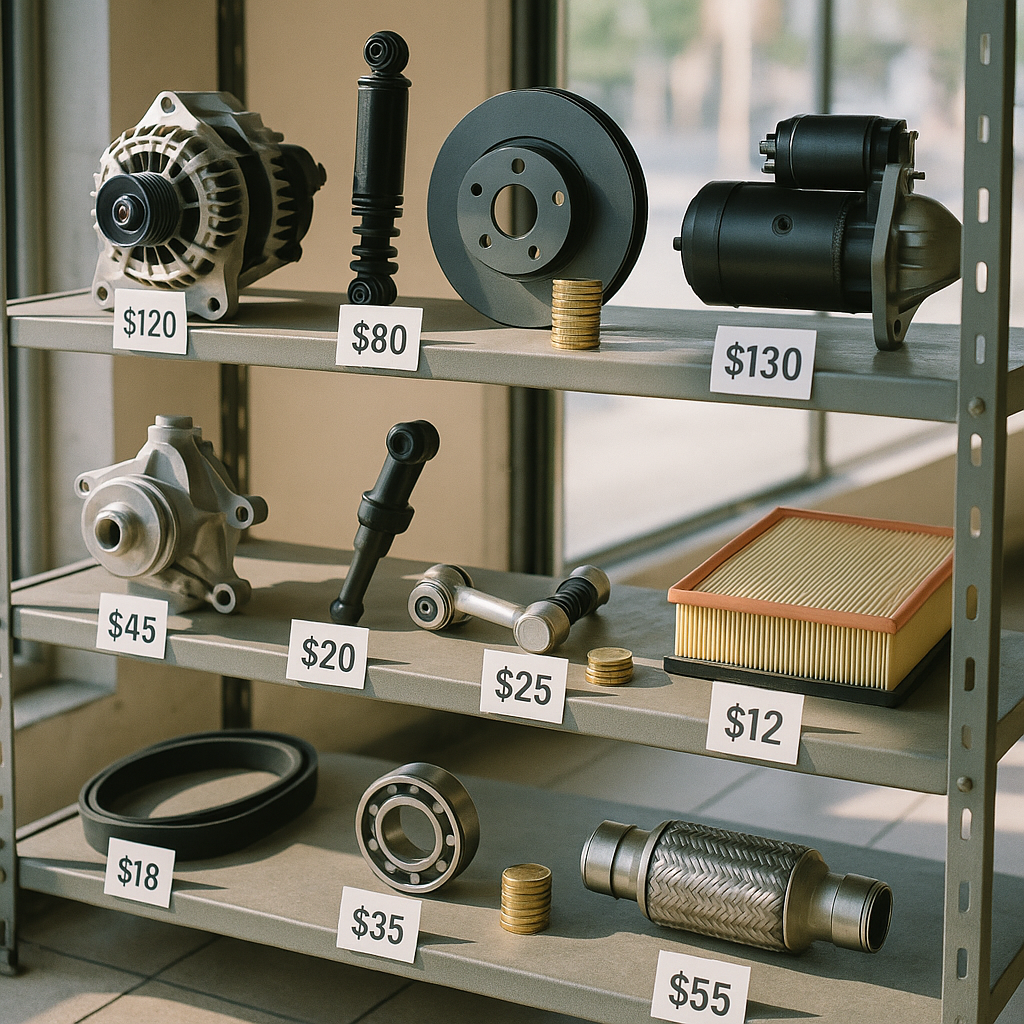5901 Botham Jean Blvd, Dallas, TX 75215
Car Parts Recycling: Reducing Waste and Preserving Resources in the Auto Industry
July 5, 2025What happens to the millions of car parts when vehicles reach the end of their useful life? Instead of letting these valuable components end up in landfills, car parts recycling offers them a second chance. This process involves collecting and reprocessing old or damaged vehicle components for reuse in other vehicles.
Car parts recycling is more than just a smart business practice—it’s an essential environmental strategy. When salvage yards and recycling facilities dismantle end-of-life vehicles, they carefully extract usable components. These parts are cleaned, inspected, and refurbished before being sold back to consumers at a fraction of the cost of new parts.
This eco-friendly approach significantly reduces landfill waste while conserving natural resources. Instead of manufacturing new components—which requires extensive mining, processing, and energy consumption—recycling keeps valuable materials in circulation. From engines and transmissions to body panels and electronics, nearly 80% of a typical vehicle can be recycled or reused, making it one of the most comprehensive recycling systems in modern industry.
What Are the Environmental Benefits of Recycling Car Parts?

Recycling car parts offers substantial environmental benefits by significantly reducing the ecological footprint of the automotive industry. When vehicles reach the end of their life, salvaging and reusing their components prevents these materials from ending up in landfills and conserves valuable natural resources, creating a more sustainable cycle for automotive materials.
The reduction in manufacturing demand is one of the most significant environmental advantages. By reusing existing components, we decrease the need for new production processes that consume substantial energy and raw materials. The U.S. Environmental Protection Agency (EPA) notes that metal production alone generates over 70 million metric tons of carbon dioxide emissions annually in the United States. Every recycled car part represents energy and emissions that won’t be spent on creating a new replacement.
Metal recycling, particularly of aluminum, exemplifies these efficiency gains. Aluminum, commonly used in engines, transmission cases, wheels, and body panels, has a recycling process that saves over 90% of the energy needed to produce new aluminum from raw bauxite ore. This leads to substantial carbon emission reductions across the automotive supply chain.
Beyond metals, recycling other car components offers additional environmental benefits:
- Plastic components like bumpers and interior parts reduce petroleum consumption when recycled.
- Rubber recycling from tires prevents harmful chemicals from leaching into soil and waterways.
- Glass recycling conserves the sand resources needed for new glass production.
- Battery recycling prevents toxic materials from contaminating ecosystems.
The environmental impact also extends to waste reduction. A typical passenger vehicle contains thousands of parts. Without recycling, these would contribute to the growing problem of solid waste disposal. The automotive recycling industry keeps approximately 25 million tons of materials from entering landfills annually, according to industry estimates.
Conservation of finite resources is another crucial benefit. Many car parts contain valuable metals like platinum, palladium, and rhodium used in catalytic converters. These precious metals are limited in quantity on Earth, and their extraction causes significant environmental disruption. Recycling these components helps preserve these resources for future generations.
| Material Type | Environmental Benefits |
| Aluminum | Saves over 90% of the energy required to produce new aluminum, reducing emissions and conserving resources. |
| Plastics | Reduces petroleum consumption and decreases energy and greenhouse gas emissions. |
| Rubber | Prevents harmful chemicals from leaching and can be repurposed for various uses, minimizing environmental impact. |
| Glass | Conserves sand resources and reduces energy consumption in new glass production. |
| Batteries | Prevents toxic materials from contaminating ecosystems by recovering valuable resources like lead and plastic. |
Recycling car parts also reduces water usage and pollution. Manufacturing new components requires substantial water for processing raw materials and cooling equipment. Recycling avoids much of this water consumption and the associated industrial pollutants that might otherwise enter waterways.
The circular economy created by automotive recycling models sustainable manufacturing. By keeping materials in use longer through recycling and remanufacturing, we reduce the overall environmental burden of transportation while supporting green jobs and economic activity.
How Does the Car Parts Recycling Process Work?

The car parts recycling process follows a systematic approach designed to maximize material recovery while minimizing environmental impact. This multi-stage operation transforms end-of-life vehicles into valuable resources through several key steps.
Collection and Transportation
The process begins with collecting vehicles from various sources such as salvage yards, repair shops, insurance companies, and individual owners with junk cars.
Specialized tow trucks transport these vehicles to recycling facilities. Many recycling companies operate their own fleet of trucks to streamline this process and ensure proper handling of potentially leaking fluids.
Upon arrival, vehicles undergo an initial assessment to determine their condition and potential value. This evaluation helps recyclers decide which parts can be salvaged and which require complete recycling.
Fluid Drainage and Hazardous Material Removal
Before dismantling begins, technicians safely drain all vehicle fluids. This includes gasoline, oil, coolant, transmission fluid, and brake fluid.
Technicians also remove hazardous components such as batteries, which contain lead and acid, requiring special handling to prevent environmental contamination.
Proper removal and disposal of these substances is crucial to prevent harmful chemicals from leaching into soil or water during subsequent recycling stages.
Parts Dismantling and Salvage
Skilled technicians carefully remove valuable components still in working condition, such as engines, transmissions, alternators, starters, and body panels.
These components undergo thorough cleaning and inspection, with technicians testing functionality and verifying that each part meets industry standards for safety and performance.
Salvaged parts then enter the refurbishment process, which may involve minor repairs, replacement of worn components, or complete rebuilding depending on condition.
After refurbishment, these parts are inventoried and made available for resale, providing affordable alternatives to new components for vehicle repairs.
Vehicle Crushing and Shredding
Once valuable parts are removed, the remaining vehicle shell is flattened using hydraulic crushers, reducing volume and preparing it for further processing.
The crushed vehicle then moves to industrial shredders, which tear the vehicle into small pieces, typically between 2-6 inches in size.
This shredding process breaks down the vehicle into manageable fragments and helps separate different materials for easier sorting.
Material Separation and Processing
The shredded material undergoes sophisticated separation processes. Technologies sort materials based on physical properties like density, magnetism, and optical characteristics.
Ferrous metals (containing iron) are usually removed first using powerful magnets, representing about 65% of a vehicle’s weight.
Non-ferrous metals like aluminum and copper are separated next using eddy current separators and other technologies.
Glass, plastics, and rubber undergo their own separation processes. Modern recycling facilities can recover and sort multiple types of plastic for specialized recycling streams.
Material Reprocessing and Manufacturing
The separated materials are sent to specialized facilities for reprocessing. Metals are melted down and formed into new products, from vehicle parts to construction materials.
Plastics are cleaned, shredded, and pelletized for use in creating new products. Glass can be crushed for use in applications like new windows or as aggregate material.
Rubber from tires can be repurposed into playground surfaces, athletic tracks, or new tire components. This completes the circular economy model of car recycling.
The entire process diverts significant waste from landfills. In fact, approximately 86% of a typical vehicle’s materials can be successfully recycled and reused.
What Are the Economic Benefits of Car Parts Recycling?

Recycling car parts offers considerable economic benefits that go beyond environmental effects. These financial advantages affect various stakeholders in the automotive industry, from individual vehicle owners to local communities.
Cost Savings for Consumers
The most immediate benefit for consumers is the significant cost difference between recycled and new parts. Recycled auto components typically cost 20-80% less than new ones, making vehicle maintenance and repairs far more affordable.
For example, a recycled transmission might cost $800 compared to $3,000 for a new one. Similarly, recycled doors, fenders, and other body parts can be purchased at a fraction of the price of new ones. These savings are especially valuable for owners of older vehicles where the cost of new parts might exceed the vehicle’s market value.
The availability of quality recycled parts offers a practical alternative for budget-conscious consumers without sacrificing vehicle performance or safety. Many recycled components come with warranties, further enhancing their value.
Revenue Generation for Businesses
The car parts recycling industry generates significant revenue streams for various businesses. Auto salvage yards, dismantling facilities, and parts resellers all benefit from this circular economic model. These businesses purchase end-of-life vehicles, extract valuable components, and sell them to consumers and repair shops.
This model is particularly resilient because it thrives in both strong and weak economic conditions. During downturns, demand for affordable recycled parts often increases as consumers seek cost-effective repair options. The industry also supports auxiliary businesses like transportation, refurbishment, and online marketplaces specializing in recycled parts.
Job Creation and Local Economic Development
Car parts recycling significantly contributes to job creation across multiple sectors. The industry employs workers in roles such as vehicle dismantling, parts testing, inventory management, sales, and customer service, ranging from entry-level to highly skilled technical jobs.
| Job Sectors | Number of Jobs |
| Automobile Dismantling and Parts Reselling | 140,000 |
| Additional Jobs in Related Industries | Supported by transportation, manufacturing, retail, etc. |
Unlike manufacturing operations that may be concentrated in specific regions, recycling facilities are distributed throughout communities nationwide. This distribution means job creation benefits both rural and urban areas. Many of these jobs cannot be outsourced, providing stable employment opportunities for local communities.
The economic impact extends beyond direct employment. Each job in auto recycling creates additional positions in related industries such as transportation, wholesale, retail, and manufacturing. This multiplier effect strengthens local economies and expands the industry’s positive impact.
Reducing Manufacturing Costs
Auto manufacturers also benefit from parts recycling through reduced material and production costs. Recycled materials require less energy to process than raw materials, creating cost efficiencies throughout the supply chain. As manufacturers face increasing pressure to adopt sustainable practices, incorporating recycled materials helps meet both economic and environmental goals.
Some manufacturers have partnerships with recycling facilities to reclaim specific materials or components. These arrangements provide reliable material streams for the manufacturer while offering stable business for recyclers. Such collaborations show how recycling can align economic interests across different sectors of the automotive industry.
Conclusion: The Future of Car Parts Recycling
Car parts recycling is fundamental to the automotive industry’s pursuit of sustainability, offering significant environmental, economic, and social benefits. By diverting materials from landfills, recycling reduces waste and conserves valuable natural resources. The automotive recycling sector also creates numerous jobs while providing consumers with affordable repair options that extend vehicle lifespans.
The future of car parts recycling is promising. Technological innovations in material separation and chemical recycling processes will enhance the recovery rates of components that were previously difficult to recycle. Increasing consumer awareness about sustainability will likely accelerate the adoption of recycled parts. These developments will bolster the circular economy model in the automotive world, ensuring resources remain in use for as long as possible. For your recycling needs, contact Okon Recycling at 214-717-4083.
